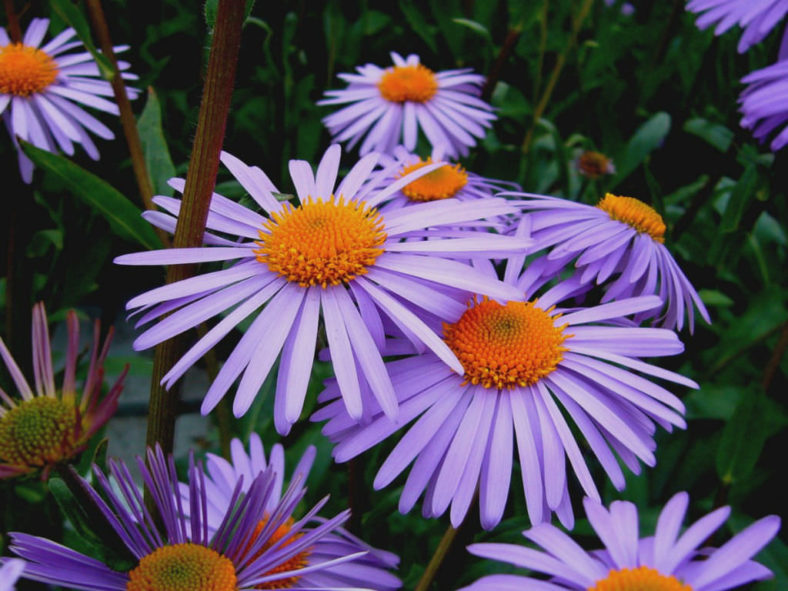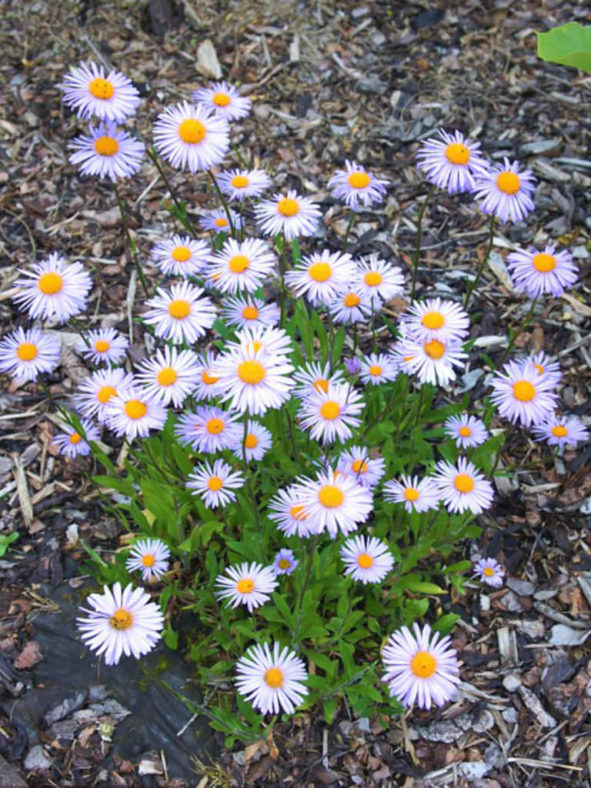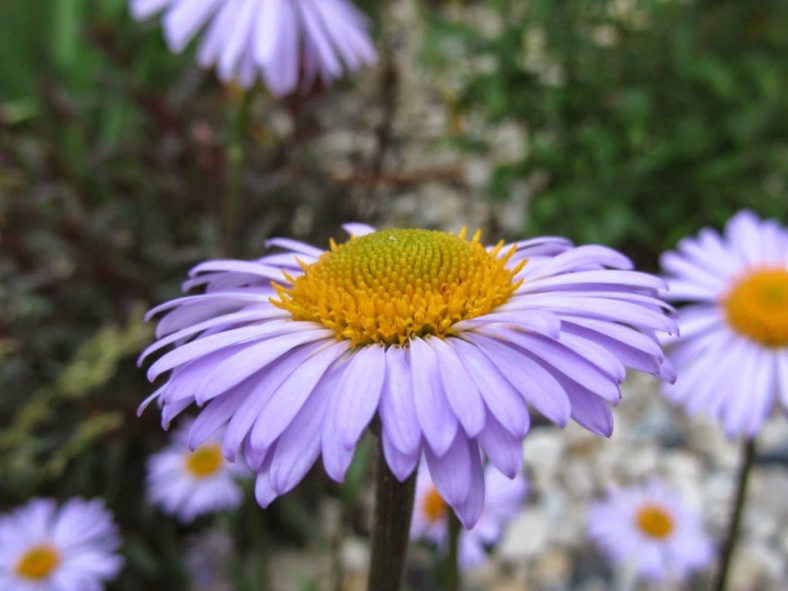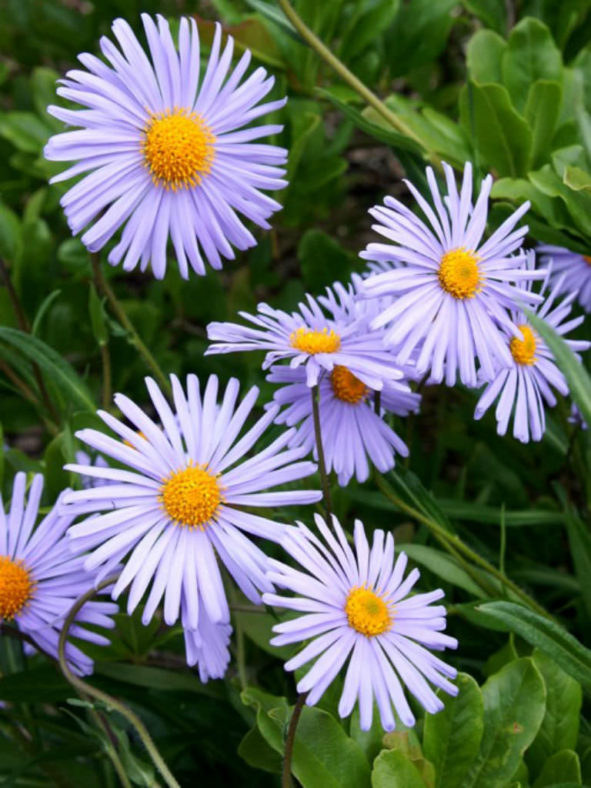Scientific Name
Aster tongolensis Franch.
Common Name(s)
East Indies Aster
Synonym(s)
Aster tongolensis f. tongolensis, Aster tongolensis subsp. tongolensis, Aster tongolensis var. tongolensis, Diplactis tongolensis, Aster subcoerulea
Scientific Classification
Family: Asteraceae
Tribe: Astereae
Genus: Aster
Origin
Aster tongolensis is native to western China and the Himalayas.
Flower
Color: Violet-blue with golden yellow center
Bloom Time: Summer through fall
Description
Aster tongolensis is a mat-forming perennial with thick, almost leafless stems supporting solitary violet-blue ray florets and orange-yellow disk florets. It grows up to 3 feet (90 cm) tall and is a long bloomer, starting up in summer and continuing through fall.

Hardiness
USDA hardiness zone 4a to 8b: from −30 °F (−34.4 °C) to 20 °F (−6.7 °C).
How to Grow and Care
Divide mature plants in spring, just as the new shoots begin to grow. This should be done every few years to avoid the crowding of plants.
As with many other flowering plants, deadhead (cut back spent flowers) makes room for newer blossoms. This will extend the health and flowering of your plants. Be sure to deadhead early on in the blooming season. Blooming will be reduced if done too late. This will also restrain unwanted reseeding, which will cause plant overcrowding.
Remember, Asters are prone to mildew, so be careful to plant them in areas with good circulation and good sun exposure.
As with other flowering plants, do not allow water to saturate leaves. Be sure to water at the plant's roots to prevent mildew and mold. Drip irrigation and utilization of a soaker hose work very well in watering these plants.
See more at How to Grow and Care for Aster.
Links
- Back to genus Aster
- Plantpedia: Browse flowering plants by Scientific Name, Common Name, Genus, Family, USDA Hardiness Zone, or Origin
Photo Gallery
Click on a photo to see a larger version.




